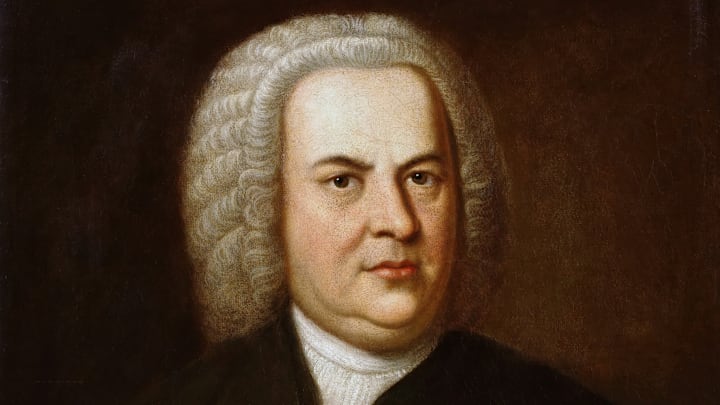Johann Sebastian Bach's "Toccata and Fugue in D minor, BWV 565" (often called "Toccata and Fugue in D minor" in shorthand), is one of the most famous and frequently performed works for the organ. Aside from sounding a bit spooky, let's offer an even broader overview of its characteristics, history, and significance to culture (read here about how Bach wasn't famous until after his death).
Composition, structure, and style of the "Toccata and Fugue in D Minor"
As the on-the-nose title suggests, the composition is in two main sections: the toccata and the fugue. The toccata is an energetic and virtuosic piece, characterized by fast-moving, brilliant passages. Toccata originates from the Italian word toccare, which literally means "to touch", with "toccata" being the action of touching. This specific piece starts with a powerful and grand introduction which, frankly, often strikes people as creepy, as if to say "I would like you to meet my pal, Dracula."
The fugue is a contrapuntal piece, where a musical theme is introduced and then developed through intricate polyphonic interplay (as Google's dictionary defines it, "contrapuntal" means there are "two or more independent melodic lines"). "The Toccata and Fugue in D minor" showcases Baroque musical style, characterized by ornamental and elaborate musical passages. Bach's compositions are known for their precision, counterpoint, and rich harmonic language.
Authorship and authenticity in question?!
When we hear the word "author," most of us think, “Well, an author is a person who writes a book." Right? Well, an author can also be someone who writes music, of course, and this becomes even more literally obvious when a piece of music itself almost tells a story. The author of the "Toccata and Fugue in D Minor" does that pretty well, as do countless other music pieces that, somehow, seem to weave a narrative even without even linking ourselves to it through some nostalgic memory. The music itself almost transports us to a unique mental space (such as my example of imagining Dracula raising from his coffin during the opening notes).
That amazing imaginary power of music aside, there is sometimes the question of whether the author really wrote something, as with Shakespeare (whose authorship and, in a sense, very existence, has been called into question). Similarly, the authorship of BWV 565 has been a topic of debate among music scholars. Some have questioned whether Bach was indeed the composer. While it's widely attributed to Bach, some argue that it may have been composed by a different musician or that it was a transcription of an earlier work. The Skeptoid Podcast has done an episode on this topic, addressing those who might have said, "Hmmm, that doesn't sound characteristic of Bach."
Influence, history and reception
The Toccata and Fugue in D minor is believed to have been composed in the early 18th century, likely during Bach's tenure as an organist and composer in various churches. It gained significant popularity in the 19th century and became a central piece in the organ repertoire. The fancy composition has been featured in various forms of media, including films, making it even more widely recognized. Its dramatic and powerful opening has made it a popular choice for film scores and has contributed to its enduring popularity and recognition in popular culture.
If you watch older horror flicks, you may have heard it in the 1931 version of Dr. Jekyll and Mr. Hyde, or the Karloff-Lugosi film The Black Cat. An IMDb user has even usefully gathered a list of media that have used the piece, though I am 100% certain it's far from complete.
Bach's "Toccata and Fugue in D minor" is a remarkable composition that continues to captivate audiences with its virtuosity, complexity, and emotive depth, and conjuring thoughts of Dracula ready to sink his fangs into your stupid neck and drink your blood until you shrivel, then toss your carcass aside, wipe his lips and say "Ah, that was good! May I have another?"
Stray, half-serious observations about Johann Sebastian Bach's "Toccata and Fugue in D minor, BWV 565"
- To DJs: Before you play this track at a party, you can (and possibly should) yell out to the crowd, "Let's party like it's 1729!," and then see how confused all the normal, generic party-goers look (some will probably look for the door). Also, absolutely make it a point to play the track straight, and not do a totally-expected "dubstep" remix, or something like that. Also, to be even cooler, don't even make this track choice at a Halloween party, but at an average, run-of-the-mill gig. Do you want to make money, or do you want to kick ass?
- Though composed for organ, the piece could also be performed on piano, harpsichord, guitar, kazoo or even ukulele. Think you can play it on a rubber band? Go wild!
- The first major public performance was by Mendelssohn, on 6 August 1840, in Leipzig, Germany. That's it. That's the fact.
- Another simple reason to believe Bach could have composed this: He was known to have composed other pieces for the organ, such as the "Clavier-Übung III." The Toccata and Fugue in D minor might work as a companion piece with Bach's moody (albeit less imposing) "Partita for keyboard No. 2, BWV 826." One piece summons Dracula, and the other he listens to after his bloodlust has momentarily been quenched, as he chillaxes on the couch to watch old reruns of Alf (that's right — in my universe, Dracula's an Alf fan).
One of the most impressive performances of "Toccata and Fugue in D minor, BWV 565" I could find:
